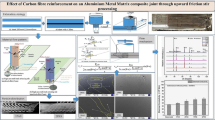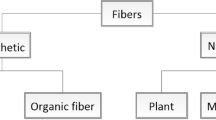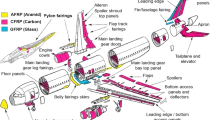Abstract
Drilling of carbon fibre–reinforced polymer composite (CFRP) material is an essential machining process in aerospace structural applications to fix/bolt holes for assembling parts. Here, producing quality holes is essential to avoid rejection of parts and it remains a great challenge to overcome damages while drilling. Monitoring the optimal drilling parameters and environmental conditions is a viable strategy to reduce the drilling-induced damages in CFRP. In this experimental investigation, a comparative study is made between chilled air–, dry air– and hot air–assisted drilling on UD-CFRP material, and the effect of drilling parameters is outlined. The thrust force, delamination, burr formation, surface roughness and surface damages of the drilled hole are analysed at different environments and machining conditions. The experimental results indicated that the drilling at the hot air environmental condition reduces the thrust force and delamination factor at low feed rate. At the same time, a higher burr removal rate and increased surface finish were obtained at the chilled air condition when compared with other environmental conditions.

















Similar content being viewed by others
References
Soutis C (2005) Fibre reinforced composites in aircraft construction. Prog Aerosp Sci 41(2):143–151
Mouritz AP, Bannister MK, Falzon PJ, Leong KH (1999) Review of applications for advanced three-dimensional fibre textile composites. Compos A Appl Sci Manuf 30(12):1445–1461
El-Hofy MH, El-Hofy H (2018) Laser beam machining of carbon fiber reinforced composites: a review. Int J Adv Manuf Technol 101(9–12):2965–2975
Shyha IS, Soo SL, Aspinwall DK, Bradley S, Perry R, Harden P, Dawson S (2011) Hole quality assessment following drilling of metallic-composite stacks. Int J Mach Tools Manuf 51(7–8):569–578
Islam MM, Li CP, Won SJ, Ko TJ (2017) A deburring strategy in drilled hole of CFRP composites using EDM process. J Alloys Compd 703:477–485
Caggiano A, Nele L (2018) Artificial Neural Networks for Tool Wear Prediction Based on Sensor Fusion Monitoring of CFRP/CFRP Stack Drilling. Int J Autom Technol 12(3):275–281
Caggiano A, Centobelli P, Nele L, Teti R (2017) Multiple sensor monitoring in drilling of CFRP/CFRP stacks for cognitive tool wear prediction and product quality assessment. Procedia CIRP 62:3–8
Gupta A, Ascroft H, Barnes S (2016) Effect of chisel edge in ultrasonic assisted drilling of carbon fibre reinforced plastics ( CFRP ). Procedia CIRP 46:619–622
Makhdum F, Phadnis VA, Roy A, Silberschmidt VV (2014) Effect of ultrasonically-assisted drilling on carbon-fibre-reinforced plastics. J Sound Vib 333(23):5939–5952
Cong WL, Pei ZJ, Feng Q, Deines TW, Treadwell C (2012) Rotary ultrasonic machining of CFRP: A comparison with twist drilling. J Reinf Plast Compos 31(5):313–321
Oliver Pecata EB (2014) Tool wear analyses in low frequency vibration assisted drilling of CFRP/Ti6Al4V stack material. Procedia CIRP 14:142–147
Debnath K, Singh I (2017) Low-frequency modulation-assisted drilling of carbon-epoxy composite laminates. J Manuf Process 25:262–273
Tsao CC (2012) Effects of Passive Backup Force on Delamination in Drilling Composite Materials Using Twist Drill. Adv Mater Res 479–481:213–216
Tsao CC, Hocheng H (2005) Effects of exit back-up on delamination in drilling composite materials using a saw drill and a core drill. Int J Mach Tools Manuf 45(11):1261–1270
Tsao CC, Hocheng H, Chen YC (2012) Delamination reduction in drilling composite materials by active backup force. CIRP Ann 61(1):91–94
Hocheng H, Tsao CC, Liu CS, Chen HA (2014) Reducing drilling-induced delamination in composite tube by magnetic colloid back-up. CIRP Ann 63(1):85–88
Durão LMP, Gonçalves DJS, Tavares JMRS, de Albuquerque VHC, Aguiar Vieira A, Torres Marques A (2010) Drilling tool geometry evaluation for reinforced composite laminates. Compos Struct 92(7):1545–1550
Bonnet C, Poulachon G, Rech J, Girard Y, Costes JP (2015) CFRP drilling: Fundamental study of local feed force and consequences on hole exit damage. Int J Mach Tools Manuf 94:57–64
Grilo TJ, Paulo RMF, Silva CRM, Davim JP (2013) Experimental delamination analyses of CFRPs using different drill geometries. Compos Part B Eng 45(1):1344–1350
Tsao CC, Chiu YC (2011) Evaluation of drilling parameters on thrust force in drilling carbon fiber reinforced plastic (CFRP) composite laminates using compound core-special drills. Int J Mach Tools Manuf 51(9):740–744
Harris M, Qureshi MAM, Saleem MQ, Khan SA, Bhutta MMA (2017) Carbon fiber-reinforced polymer composite drilling via aluminum chromium nitride-coated tools: Hole quality and tool wear assessment. J Reinf Plast Compos 36(19):1403–1420
Won MS, Dharan CKH (2002) Chisel Edge and Pilot Hole Effects in Drilling Composite Laminates. J Manuf Sci Eng 124(2):242
Tsao CC, Hocheng H (2003) The effect of chisel length and associated pilot hole on delamination when drilling composite materials. Int J Mach Tools Manuf 43(11):1087–1092
Tsao CC (2006) The effect of pilot hole on delamination when core drill drilling composite materials. Int J Mach Tools Manuf 46(12–13):1653–1661
Morell CMJ, Hampson PR (2018) Pneumatically Powered Drilling of Carbon Fibre Composites Using Synthetic Biodegradable Lubricating Oil: An Experimental Study. Aerospace 5(1):9
Brinksmeier E, Janssen R (2002) Drilling of multi-layer composite materials consisting of carbon fiber reinforced plastics (CFRP), titanium and aluminum alloys. CIRP Ann 51(1):87–90
John KM, Kumaran ST, Kurniawan R, Moon Park K, Byeon JH (2019) Review on the methodologies adopted to minimize the material damages in drilling of carbon fiber reinforced plastic composites. J Reinf Plast Compos 38(8):351–368
Lei S, Pfefferkorn F (2007) A review of thermally assisted machining. Proc ASME Int Manuf Sci Eng Conf MSEC2007:325–336
Xia T, Kaynak Y, Arvin C, Jawahir IS (2016) Cryogenic cooling-induced process performance and surface integrity in drilling CFRP composite material. Int J Adv Manuf Technol 82(1–4):605–616
Bhattacharyya D, Horrigan DPW (1998) A study of hole drilling in Kevlar composites. Compos Sci Technol 58(2):267–283
Tetsuya Tashiro KI, Fujiwara J (2011) Drilling of CFRP/Ti-6Al-4V Stacks. Adv Mater Res 325:369–374
Salama A, Li L, Mativenga P, Whitehead D (2016) TEA CO2 laser machining of CFRP composite. Appl Phys A Mater Sci Process 122(5):497
Xu W, Zhang L (2019) Heat effect on the material removal in the machining of fibre-reinforced polymer composites. Int J Mach Tools Manuf 140:1–11
Bhowmick S, Alpas AT (2013) The Performance of Diamond-Like Carbon Coated Drills in Thermally Assisted Drilling of Ti-6Al-4V. J Manuf Sci Eng 135(6):061019
Haddad RH, Al-Rousan R, Almasry A (Feb. 2013) Bond-slip behavior between carbon fiber reinforced polymer sheets and heat-damaged concrete. Compos Part B Eng 45(1):1049–1060
Sauder C, Lamon J, Pailler R (2004) The tensile behavior of carbon fibers at high temperatures up to 2400 °C. Carbon N Y 42(4):715–725
Malhotra SK (1990) Some studies on drilling of fibrous composites. J Mater Process Technol 24(C):291–300
Rawat S, Attia H (2009) Wear mechanisms and tool life management of WC-Co drills during dry high speed drilling of woven carbon fibre composites. Wear 267(5–8):1022–1030
Caggiano A, Nele L (2018) Comparison of drilled hole quality evaluation in CFRP/CFRP stacks using optical and ultrasonic non-destructive inspection. Mach Sci Technol 22(5):865–880
Hwang YK, Lee CM, Park SH (2009) Evaluation of machinability according to the changes in machine tools and cooling lubrication environments and optimization of cutting conditions using Taguchi method. Int J Precis Eng Manuf 10(3):65–73
Wang GD, Melly SK, Li N, Peng T, Li Y (2018) Research on milling strategies to reduce delamination damage during machining of holes in CFRP/Ti stack. Compos Struct 200:679–688
Ismail SO, Dhakal HN, Dimla E, Popov I (2017) Recent advances in twist drill design for composite machining: a critical review. Proc Inst Mech Eng B J Eng Manuf 231(14):2527–2542
Liu Z, Shi Z, Wan Y (2013) Definition and determination of the minimum uncut chip thickness of microcutting. Int J Adv Manuf Technol 69(5–8):1219–1232
Palanikumar K, Karunamoorthy L, Karthikeyan R (2004) Optimal machining parameters for achieving minimal tool wear in turning of GFRP composites. J Manuf Sci Prod 6(3):119–128
Ismail SO, Dhakal HN, Popov I, Beaugrand J (2016) Comprehensive study on machinability of sustainable and conventional fibre reinforced polymer composites. Eng Sci Technol Int J 19(4):2043–2052
Manickam R, Gopinath A (2017) Measurement and analysis of thrust force in drilling sisal-glass fiber reinforced polymer composites. IOP Conf Ser Mater Sci Eng 197(1). https://doi.org/10.1088/1757-899X/197/1/012056
Qiu X, Li P, Niu Q, Chen A, Ouyang P, Li C, Ko TJ (2018) Influence of machining parameters and tool structure on cutting force and hole wall damage in drilling CFRP with stepped drills. Int J Adv Manuf Technol 97(1–4):857–865
Rajkumar GM, Bhardwaj D, Kannan C, Oyyaravelu R, Balan ASS (2019) Effect of chilled air on delamination, induced vibration, burr formation and surface roughness in CFRP drilling: a comparative study. Mater Res Express 6(3):035305
Cree D, Gamaniouk T, Loong ML, Green MF (2014) Tensile and lap-splice shear strength properties of CFRP composites at high temperatures. J Compos Constr 19(2):04014043
Cao S, Zhis WU, Wang X (2009) Tensile properties of CFRP and hybrid FRP composites at elevated temperatures. J Compos Mater 43(4):315–330
Chowdhury EU, Eedson R, Bisby LA, Green MF, Benichou N (2011) Mechanical characterization of fibre reinforced polymers materials at high temperature. Fire Technol 47(4):1063–1080
Yang Y, Jiang Y, Liang H, Yin X, Huang Y (2019) Study on tensile properties of CFRP plates under elevated temperature exposure. Materials (Basel) 12(12). https://doi.org/10.3390/ma12121995
Jia Z, Fu R, Wang F, Qian B, He C (2018) Temperature effects in end milling carbon fiber reinforced polymer composites. Polym Compos 39(2):437–447
Krishnaraj V, Prabukarthi A, Ramanathan A, Elanghovan N, Senthil Kumar M, Zitoune R, Davim JP (2012) Optimization of machining parameters at high speed drilling of carbon fiber reinforced plastic (CFRP) laminates. Compos Part B Eng 43(4):1791–1799
Wang H, Zhang X, Duan Y (2018) Effects of drilling area temperature on drilling of carbon fiber reinforced polymer composites due to temperature-dependent properties. Int J Adv Manuf Technol 96(5–8):2943–2951
Díaz-Álvarez J, Olmedo A, Santiuste C, Miguélez MH (2014) Theoretical estimation of thermal effects in drilling of woven carbon fiber composite. Materials (Basel) 7(6):4442–4454
Charalambous G, Allegri G, Hallett SR (2015) Temperature effects on mixed mode I/II delamination under quasi-static and fatigue loading of a carbon/epoxy composite. Compos A Appl Sci Manuf 77:75–86
Abish J, Samal P, Narenther MS, Kannan C, Balan ASS (2018) Assessment of drilling-induced damage in CFRP under chilled air environment. Mater Manuf Process 33(12):1361–1368
Xu J, An Q, Cai X, Chen M (2013) Drilling machinability evaluation on new developed high-strength T800S/250F CFRP laminates. Int J Precis Eng Manuf 14(10):1687–1696
Xu J, El Mansori M (2016) Experimental study on drilling mechanisms and strategies of hybrid CFRP/Ti stacks. Compos Struct 157:461–482
Cong W, Feng Q, Pei Z, Deines T, Treadwell C (2012) Rotary ultrasonic machining of carbon fiber-reinforced plastic composites: using cutting fluid vs. cold air as coolant. J Compos Mater 46(14):1745–1753
Zitoune R, Krishnaraj V, Sofiane Almabouacif B, Collombet F, Sima M, Jolin A (2012) Influence of machining parameters and new nano-coated tool on drilling performance of CFRP/Aluminium sandwich. Compos Part B Eng 43(3):1480–1488
El-Hofy MH, Soo SL, Aspinwall DK, Sim WM, Pearson D, Harden P (2011) Factors affecting workpiece surface integrity in slotting of CFRP. In: Procedia Engineering, vol 19, pp 94–99
Rawat S, Attia H (2009) Characterization of the dry high speed drilling process of woven composites using Machinability Maps approach. CIRP Ann 58(1):105–108
Author information
Authors and Affiliations
Corresponding author
Additional information
Publisher’s note
Springer Nature remains neutral with regard to jurisdictional claims in published maps and institutional affiliations.
Rights and permissions
About this article
Cite this article
John, K.M., Kumaran, S.T. A feasible strategy to produce quality holes using temperature-assisted drilling on CFRP. Int J Adv Manuf Technol 110, 3113–3127 (2020). https://doi.org/10.1007/s00170-020-06089-w
Received:
Accepted:
Published:
Issue Date:
DOI: https://doi.org/10.1007/s00170-020-06089-w




